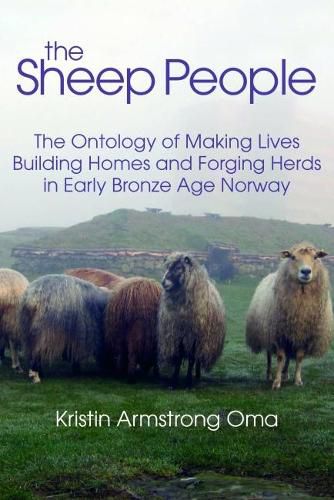Readings Newsletter
Become a Readings Member to make your shopping experience even easier.
Sign in or sign up for free!
You’re not far away from qualifying for FREE standard shipping within Australia
You’ve qualified for FREE standard shipping within Australia
The cart is loading…






This title is printed to order. This book may have been self-published. If so, we cannot guarantee the quality of the content. In the main most books will have gone through the editing process however some may not. We therefore suggest that you be aware of this before ordering this book. If in doubt check either the author or publisher’s details as we are unable to accept any returns unless they are faulty. Please contact us if you have any questions.
The overarching aim of The Sheep People is to examine what happens to the understanding of past societies when animals are perceived as sentient beings, agents with the ability to impact human lives. Not only are the agentive powers and potential of animals recognised, but also how this shaped prehistoric societies. Throughout, animals are considered as themselves, not as props, tools or consumables for human societies. A thorough review of recent research that supports the agential potential of animals from Human-Animal Studies and the social sciences, as well as ethology, biology and neurology is given, and discussed in light of the archaeological case study. In the Early Bronze Age in northern Europe, a transition from building two-aisled to three-aisled longhouses as the primary farm dwelling took place. In Rogaland, southwestern Norway, this architectural change happened as the result of intensified human-sheep relationships, born from greater engagement and proximity needed to utilise wool. Evidence from landscape changes, settlements, mortuary practices and rock art give an in-depth understanding of the life-world of Bronze Age human and non-human agents and the nature of the choices they made. A rock art panel portraying sheep, man and dog demonstrates the entangled choreography of sheep herding.
$9.00 standard shipping within Australia
FREE standard shipping within Australia for orders over $100.00
Express & International shipping calculated at checkout
This title is printed to order. This book may have been self-published. If so, we cannot guarantee the quality of the content. In the main most books will have gone through the editing process however some may not. We therefore suggest that you be aware of this before ordering this book. If in doubt check either the author or publisher’s details as we are unable to accept any returns unless they are faulty. Please contact us if you have any questions.
The overarching aim of The Sheep People is to examine what happens to the understanding of past societies when animals are perceived as sentient beings, agents with the ability to impact human lives. Not only are the agentive powers and potential of animals recognised, but also how this shaped prehistoric societies. Throughout, animals are considered as themselves, not as props, tools or consumables for human societies. A thorough review of recent research that supports the agential potential of animals from Human-Animal Studies and the social sciences, as well as ethology, biology and neurology is given, and discussed in light of the archaeological case study. In the Early Bronze Age in northern Europe, a transition from building two-aisled to three-aisled longhouses as the primary farm dwelling took place. In Rogaland, southwestern Norway, this architectural change happened as the result of intensified human-sheep relationships, born from greater engagement and proximity needed to utilise wool. Evidence from landscape changes, settlements, mortuary practices and rock art give an in-depth understanding of the life-world of Bronze Age human and non-human agents and the nature of the choices they made. A rock art panel portraying sheep, man and dog demonstrates the entangled choreography of sheep herding.